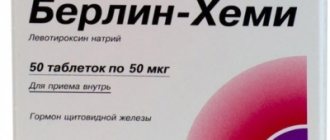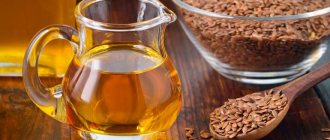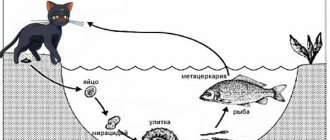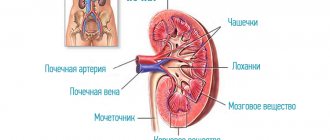At the end of the 20th and beginning of the 21st centuries, diseases of the cardiovascular system acquired the nature of a pandemic, being the main cause of disability and death in the population of economically developed countries. The main role in circulatory disorders in arterial vessels belongs to atherosclerosis.
Atherosclerosis is a chronic disease of the arteries that occurs as a result of lipid metabolism disorders and is accompanied by the deposition of cholesterol and its “bad” fractions in the vessel wall. Deposits form atherosclerotic (cholesterol) plaques on the walls of blood vessels. The subsequent growth of connective tissue in them (sclerosis), and calcification (calcium deposition) of the vessel wall lead to deformation and narrowing of the lumen until complete blockage.
When the arteries supplying the heart are damaged, a phenomenon called angina pectoris (chest pain) occurs and, as a result, acute myocardial infarction may develop.
Damage to the arteries supplying the brain causes either a transient (micro-stroke) or persistent (stroke) disturbance of cerebral circulation. Deposition of cholesterol in the arteries of the extremities is the cause of the development of lameness, pain in the calf during exercise, and gangrene of the extremity. Atherosclerosis of the abdominal arteries leads to intestinal ischemia and gangrene. Possible narrowing of the renal arteries due to the accumulation of cholesterol leads to a pronounced increase in blood pressure.
Risk factors for the development of atherosclerosis
- hypertension (systolic blood pressure >140 mm Hg, diastolic blood pressure >90 mm Hg),
- alcohol abuse,
- smoking (the most dangerous factor),
- sedentary lifestyle,
- unhealthy diet
- hereditary predisposition,
- obesity,
- increased cholesterol in the blood (total cholesterol >5 mmol/l, “bad” cholesterol >3 mmol/l, a-cholesterol >50 mg/dl,
- diabetes,
- emotional overstrain.
Such a high probability of atherosclerosis requires timely provision of therapeutic and preventive assistance, because it is known that a person’s age is determined by the state of his vascular bed. In the popular scientific literature devoted to the problem of atherosclerosis, the expression “ cleansing of blood vessels ” is used. Although not a medical term, “ vascular cleansing ” defines a number of extremely relevant measures for the prevention and treatment of atherosclerosis:
- healthy lifestyle and prevention of atherosclerotic process in blood vessels,
- stabilization of the course of atherosclerosis in the presence of its clinical manifestations through pharmacological agents,
- surgical restoration of vascular patency in cases of severe manifestations of atherosclerosis.
Myths about “cleansing” blood vessels
The term “cleaning” is popularly understood to mean the following processes:
- reduction or complete “destruction” of cholesterol plaques, dissolution of blood clots;
- strengthening blood vessels and increasing the resistance of the intima (inner layer of the vessel) to any damage;
- improving the functioning of the smooth muscles of the vascular wall.
“Doctors” have developed a lot of different remedies that supposedly should not only prevent the appearance of new atherosclerotic plaques, but also completely remove existing ones, bringing the cardiovascular system to its original (“healthy”) state.
There are 2 main myths circulating among people that are associated with cleaning blood vessels:
- Herbal remedies can reduce the area of atherosclerotic damage to the vascular bed if taken on an ongoing basis.
- Once every six months (or a year) you should go to the hospital or visit a day hospital, where a course of treatment is carried out (intravenous administration of Mexidol, Cavinton, Actovegin and other agents that improve microcirculation and regulate the permeability of the vascular wall). It is believed that this option completely cleanses the bloodstream.
However, the reality is harsh! The body's vast network of blood vessels, which deliver oxygen and nutrients to all cells, is not a water pipe. Blockages or build-ups on interior wall surfaces cannot be removed in the same way that Fairy or Mole removes grease blockages. Any atherosclerotic lesion is irreversible and will never disappear (with the exception of surgical therapy).
Atherosclerosis is a serious pathology that is often hereditary. If there is a disorder in the metabolism of lipoproteins in the body (dyslipidemia), “atherogenic” substances begin to be actively deposited in the walls of blood vessels and it is no longer possible to remove them from there! The more a person makes mistakes in diet and lifestyle, the less he monitors basic health indicators, the more the circulatory system suffers.
The outcome is always the same - a serious cardiovascular complication (ischemic or hemorrhagic stroke, coronary heart disease and myocardial infarction, chronic kidney disease).
Therefore, if we give any meaning to the term “cleaning of blood vessels,” it should include the following criteria:
- normalization of lipid profile;
- glucose control;
- systematic observation by a doctor in the presence of atherosclerosis (in order to timely identify significant obstruction of any vessel and prescribe surgical treatment).
Considering that atherosclerosis is an integral part of the metabolic syndrome, body weight should be brought to normal levels and hypertension should be treated. The set of problems described above (or several of them) is typical for almost every person over 40 years old.
Diet for vascular atherosclerosis
First of all, it is supposed to reduce the consumption of fats (containing cholesterol) to such a level that they account for less than 30% of daily calories. In this case, the proportion of saturated fats should not exceed 10%. It is recommended that cholesterol intake be no more than 300 mg per day.
The next requirement for the diet is calorie restriction. In this case, the total caloric intake should not exceed 2500 calories per day. However, we must not forget about the variety and nutritional value of food. It is known, for example, that a deficiency of protein in food reduces resistance to stress, a lack of fatty acids contained in vegetable oils impairs brain function, etc.
Animal products
The consumption of saturated fat, or more simply cholesterol, can be reduced by reducing the amount of beef, pork and lamb. It is recommended to consume any meat products boiled.
It is necessary to remove the skin from the bird and avoid eating the internal organs of animals.
Fatty fish, such as halibut, contain a completely different type of fat that helps dissolve cholesterol plaques in arteries affected by atherosclerosis. Experts from Duke University believe that even one fish meal a week may be enough to reduce the risk of an unexpected heart attack by 50%. Interestingly, you can take fish oil instead of fish, which contains omega-3 fatty acids and lowers cholesterol.
Also, the diet should satisfy the body's needs for vitamin B6. It is actively involved in the processes of fat metabolism, in the transport and breakdown of cholesterol, and in organic iodine, which increases the synthesis of thyroid hormones. Thus, it stimulates the processing of dangerous cholesterol.
For this purpose, it is recommended to include seafood in the diet:
- seaweed dishes,
- squid,
- scallop,
- mussels, etc.
These are the products that lower cholesterol and “clean” blood vessels .
Products of plant origin
Vegetable oil contains “healthy” polyunsaturated fats. Olive oil is considered the most beneficial among vegetable fats. Try to replace them with other types of fats that contain bad cholesterol. Preference should be given to unrefined, cold-pressed olive oil. Because it contains a record amount of antioxidants that are beneficial for the heart and blood vessels, preventing the development of atherosclerosis. This oil is also involved in cleaning blood vessels from cholesterol.
But you can’t get carried away with vegetable oils either! This is often forgotten in recommendations. The fact is that an excess of polyunsaturated fatty acids can lead to a decrease in good cholesterol, which has an anti-sclerotic effect.
Cholesterol intake can be reduced by reducing the consumption of egg yolks (4 yolks per week) and organ meats:
- brain,
- kidneys,
- liver.
55-60% of daily calories should be provided by complex carbohydrates:
- vegetables,
- whole grain products,
- fresh fruits.
An important point is the inclusion of wholemeal products in the diet. The substances contained in the shells of grain crops bind and remove from the body cholesterol contained in food, as well as salts of heavy metals, nitrates and nitrites, carcinogens. Whole grain bread, wheat bran and oat bran contain coarse fiber. The norm is at least 20 g of fiber per day.
One of the richest sources of omega-3 fatty acids is flaxseed. Canadian cardiologists have found that regular consumption of flaxseed provides reliable protection against the formation of blood clots and cholesterol deposition in the arteries, leading to heart attack and stroke. The risk of heart attack can be reduced by up to 40%. 2 tbsp per day is enough. tablespoons of flaxseed, which can be added to porridge, salads and other dishes. Flaxseed should be stored in the refrigerator.
In fact, all of the above products can be classified as traditional methods of treating vascular atherosclerosis.
What are cholesterol plaques
Each human organ receives nutrition from vessels, of which there is a huge and extensive network in the body. Blood flowing through the vessels is not a solution, but a suspension, when a suspension of cells, called formed elements, floats in the liquid. The liquid part of the blood does not at all resemble water, which is explained by the molecules dissolved in it, mainly of a protein nature. But various products of fat metabolism also “float” in the blood, in particular cholesterol, triglycerides, and lipoproteins.
According to the laws of physics, blood moves through the vessels in such a way that it is practically free of cells, and most of the formed elements “go” along the edges, representing a kind of “quick response department”: in response to damage to the vessels, platelets immediately descend from here, “closing” gap.
The liquid part of the blood also comes into contact with the vascular walls. As we remember, the products of fat metabolism are dissolved in it. There are several different ones, cholesterol is only one of the components. This system is structured as follows: normally, “bad” fats are in balance with their antagonists, “good” fats (“good” cholesterol). When this balance is disturbed - either the number of “bad” ones increases, or the volume of “good” ones decreases - fatty tubercles - plaques - begin to be deposited on the walls of arterial vessels. The risk of depositing such plaques is judged by the ratio of good fats (they are called “high-density lipoproteins” - HDL) and the sum of low-density lipoproteins (LDL) and very low-density lipoproteins (VLDL). This can be done using a blood test from a vein, called a lipid profile.
Such a plaque is dangerous in the following ways:
- It can come off and, having passed with the blood flow to a vessel of “suitable” diameter, clogs it, thereby depriving the area feeding from there of some kind of nutritional organ. The smaller the vessel, the smaller the area that dies, the less the functioning of this organ and the body as a whole is disrupted (there is “duplication” within the tissue of each organ, thanks to which each “piece” receives nutrition from several small-diameter vessels at once).
- The blood is forced to bypass the plaque, as a result of which, instead of a uniform flow in the vessel, “vortices” are created when part of the blood flowing near the wall covered with the plaque has to return back. Turbulence in the blood flow impairs the nutrition of the blood supply to the organ. Here the relationship is the same as in the point above: the larger the diameter of the artery damaged by the plaque, the more the organ suffers.
- If the composition of the blood does not change, and the amount of HDL and enzymes that should “break off” the plaque does not increase, the body tries to limit it. To do this, he sends immune cells to the site of plaque deposition, whose task is to “bite off” pieces of the plaque and digest them. But the cells are unable to do this: instead of digesting, the immune cells are damaged by cholesterol and fats, and remain “lying” around the cholesterol. Then the body decides to cover this formation with connective tissue, and the plaque increases in size even more, now worsening the blood supply to the organ not only due to turbulence, but due to a decrease in the lumen of the vessel.
- Covering with connective tissue is good for the plaque and bad for the vessel. Now, if something damages the plaque, it will “call” platelets to itself, which will form a blood clot on its surface. This phenomenon, firstly, will further reduce the diameter of the vessel, and secondly, it will increase the risk (especially in vessels with “active” blood flow) of a blood clot breaking off and blocking a smaller vessel.
- A long-existing plaque becomes covered with calcium salts. Such a wall formation is already stable and will not come off without intervention. But it tends to grow and reduce the lumen of the vessel.
The rate of plaque formation is affected by:
- consumption of animal fats;
- smoking;
- diabetes;
- excess weight;
- physical inactivity;
- high blood pressure;
- binge eating;
- eating large amounts of simple carbohydrates with food.
The localization of plaque deposition is unpredictable: it can be either the arteries supplying the brain or the arteries of the kidneys, limbs or other organs. Depending on this, they can cause:
- ischemic stroke;
- angina pectoris;
- myocardial infarction;
- intestinal gangrene;
- aortic aneurysm;
- discirculatory encephalopathy, which is manifested by memory deterioration, headaches, decreased ability to analyze what is happening;
- deterioration of blood supply to a larger or smaller area of the limb, up to its gangrene;
- if the plaque blocks the aorta in the area where large vessels originate from it to each of the lower extremities, both legs will suffer only from ischemia or gangrene.
Diet of cardiac patients
It is necessary to limit table salt and include foods rich in potassium salts: baked potatoes, green onions, parsley, apricots, dried apricots, figs, prunes, apricots, bananas. Coffee beans contain a lot of potassium, but instant coffee does not! And also in black tea leaves. Green tea contains several powerful antioxidants that lower cholesterol and help normalize blood pressure. 3 teaspoons of green tea are poured into 0.5 liters of boiling water, steeped for 10 minutes and filtered. This amount is enough for a day.
It is highly recommended to distribute the diet into 5-6 meals. The last meal should be no later than 18-19 hours.
Eating any vegetables and fruits is beneficial. It is advisable to consume from 5 to 7 different types daily. Eggplants occupy a special place; they help eliminate cholesterol and also reduce its content in the blood and in the walls of blood vessels.
Nuts have a similar effect:
- peanut,
- walnuts,
- cashew nuts,
- hazel,
- almond,
- hazelnut.
Research shows that eating 150g of shelled nuts per week reduces the risk of coronary artery disease and heart attack by 33% in some patients. However, you should not get carried away with nuts, since these are very high-calorie foods that contribute to weight gain.
Cabbage is very useful:
- broccoli,
- Brussels sprouts
- white cabbage,
- colored.
They contain antioxidants and other valuable biologically active substances that are beneficial for blood vessels and the heart.
It is recommended to eat 2-4 sweet and sour apples daily. Black currants, shadberry and garlic are useful.
Traditional methods of treating vascular atherosclerosis are mainly associated with the use of healthy products that can be found in any garden and summer cottage.
How to lower blood cholesterol
Based on the results of numerous medical studies, it has been confirmed that the substance can cause harm to health when plaques form on the vascular walls. This process increases the risk of thrombosis, myocardial infarction, stroke and other diseases. It is worth remembering that not only cholesterol is to blame for the development of these diseases, but also a wide range of factors affecting health.
The body produces it as a protective material. It is used to restore blood vessels and cells after damage or wear.
Excessively low levels of the substance in the blood also do not have a positive effect on the body. Therefore, in search of answers to the question of how to lower cholesterol, you should not resort to powerful medications and diets unless there is a direct need and a doctor’s recommendation. Only a qualified medical specialist, after examination and laboratory tests, can prescribe a competent course and the required dose of statins (medicines), which will only bring benefit to the body and not harm.
Controlling cholesterol levels in the blood
Before you start eating foods that lower cholesterol effectively and quickly, you should find out its level in the blood. People over forty years of age, with problems of excess weight and obesity, as well as those who have a predisposition to cardiovascular diseases should be especially careful about the process of level control. The measuring unit of a substance is millimoles per liter or mmol/l.
Non-drug methods for the prevention and treatment of vascular atherosclerosis
- to give up smoking,
- anti-atherosclerotic diet,
- active lifestyle - regular dosed physical activity,
- maintaining psychological and physical comfort,
- weight loss.
The diet is prescribed for 3-4 months, after which tests are monitored. If laboratory data and well-being indicate an improvement, then monitoring of the patient continues, but the diet is not removed. If no effect is obtained (cholesterol levels are even higher than normal), then the diet is tightened. If after another 3 months no effect is observed, then modern medications from the statin group are added.
Surgical methods for restoring blood flow (cleaning blood vessels)
Surgical methods of cleaning blood vessels are used for clinically pronounced manifestations of vascular insufficiency. In case of damage to the abdominal aorta and arteries of the lower extremities, the indications are:
- reducing the distance of pain-free walking to less than 200 meters,
- pain in the foot at rest,
- development of trophic ulcers and peripheral gangrene.
Surgical cleaning of blood vessels involves: removal of blood clots from the lumen of the artery, elimination of plaques narrowing or clogging the lumen of the vessel, the so-called endarterectomy. If it is impossible to locally remove obstacles in the lumen of the vessel, a new roundabout blood circulation path is created (bypass surgery).
Currently, surgeons have in their arsenal new, progressive methods of restoring or improving blood circulation in vessels, using X-ray endovascular interventions, during which it is possible to expand the lumen of the vessel (balloon plasty) and install a device to prevent narrowing of the vessel in the plasty area (stenting).
The problem of atherosclerosis cannot be eliminated by using any one method, even the most modern one. Treatment and prevention of atherosclerosis are complex and constant, with mandatory monitoring of their effectiveness.
The danger of plaque deposits and methods of diagnosis
It is difficult for doctors to make predictions regarding the consequences of the accumulation of atherosclerotic plaques in blood vessels. This depends on the duration of the disease, clinical manifestations, and the location of the clogged arteries. When brain tissue is damaged, the consequences are stroke and transistor attack.
In more rare cases, the patient develops memory loss and dementia. If the aorta (chest and peritoneum) is damaged, gangrene of the leg, death of intestinal tissue or its obstruction, and aortic aneurysm may develop. To avoid such serious consequences, you need to pay timely attention to the diagnosis of atherosclerosis.
It is not worth repeating that if a large part of a blood clot breaks off and gets into a small capillary, especially one located close to the heart, a person can die instantly. To detect the presence of atherosclerotic plaques in the body, the following methods are used:
- external examination of the patient;
- interview and further collection of anamnesis - it turns out that the patient has addictions, his nutrition, physical activity, body weight and hereditary predisposition to atherosclerosis are assessed;
- blood test for the content of lipids, lymphocytes and other biochemical components;
- Ultrasound scanning of blood vessels - allows you to assess the structure of capillaries and the completeness of the blood supply to tissues;
- X-ray of the aorta - helps to detect calcification, expansion of the aortic window in the early stages;
- angiography using a contrast agent - specialists check the patency of blood vessels and assess the level of stenosis.
Other techniques, such as computed tomography or magnetic resonance imaging, are used on the recommendation of a doctor if it is necessary to clarify the location of deposits, the structure of plaques and the stage of the disease.
During diagnosis, it is important to distinguish manifestations of atherosclerosis from other diseases accompanied by similar symptoms
Damage to cerebral vessels by plaques should be separated from syphilis of the brain, injuries and neurological disorders. If the aorta is affected, a differentiated diagnosis is carried out to distinguish it from pathologies of the peritoneal organs. Blockage of blood vessels in the legs must be separated from varicose veins and post-traumatic conditions.










